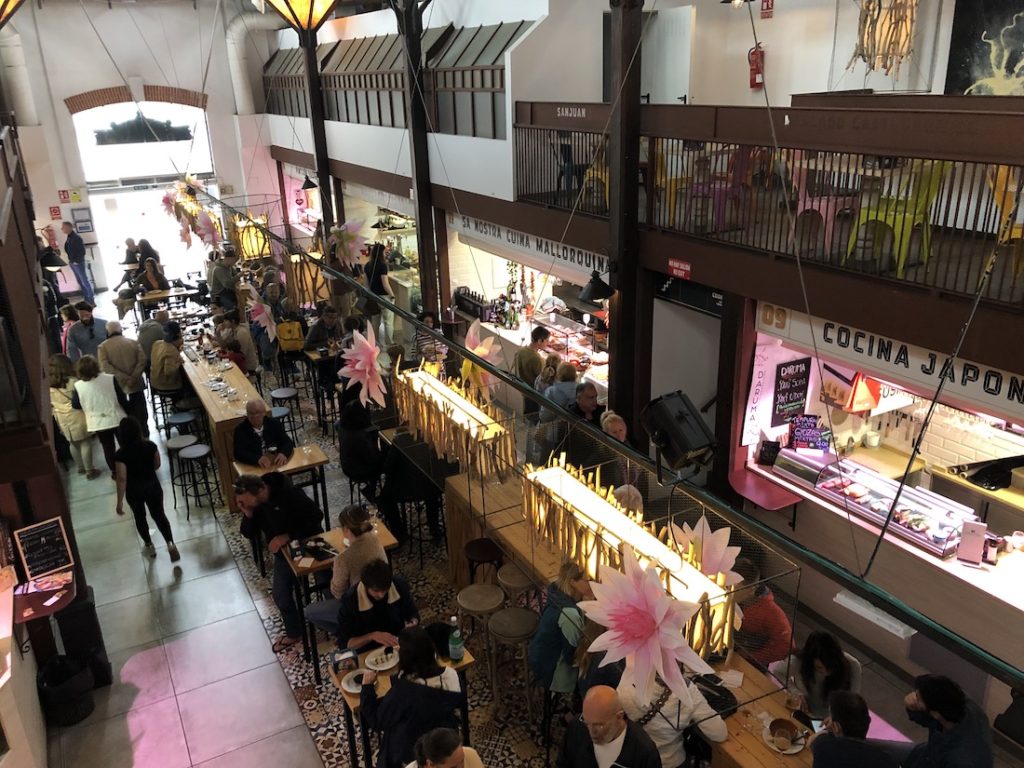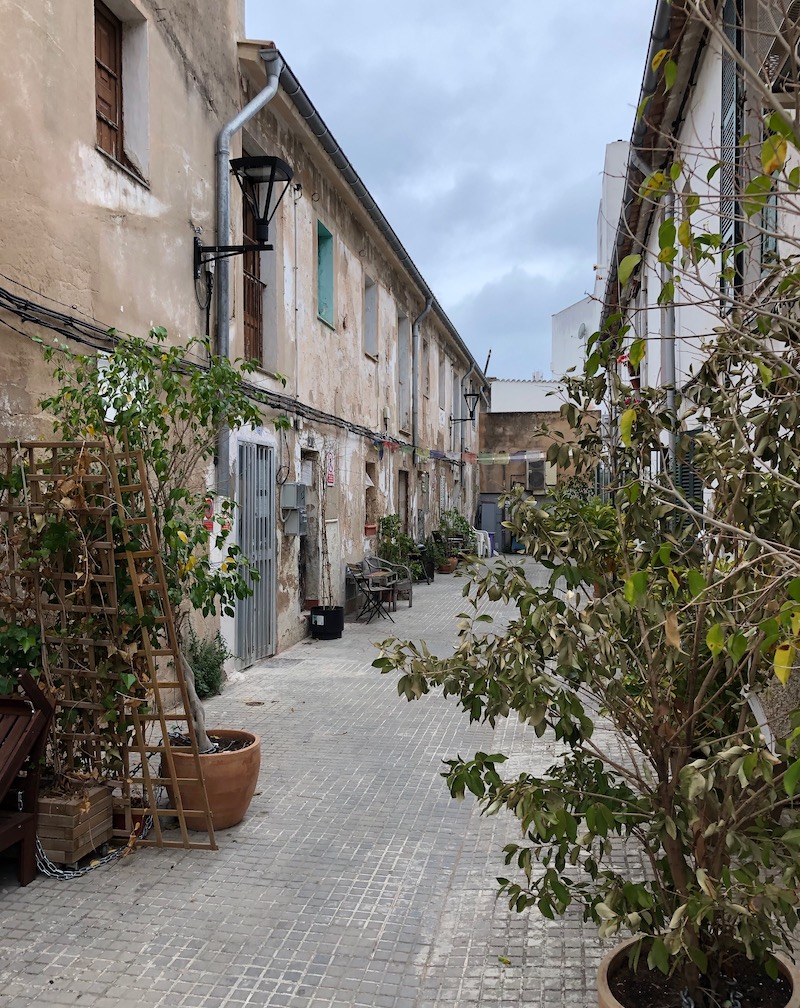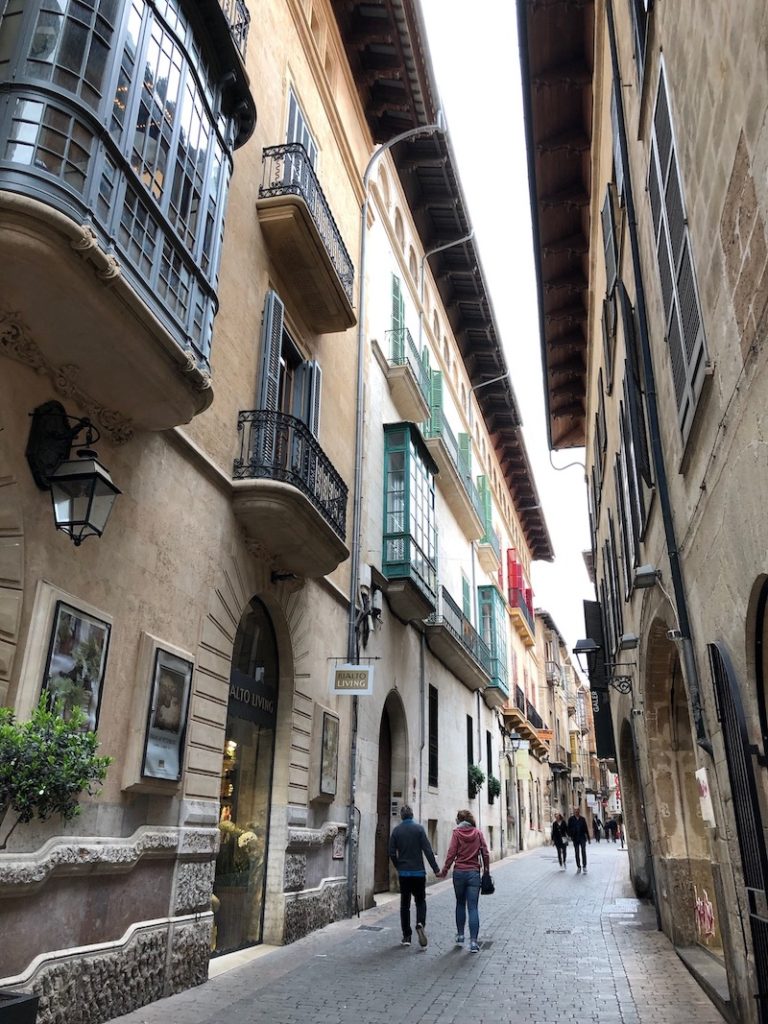Mallorca’s capital Palma has a well-deserved reputation when it comes to food and the star of the show is the San Juan Gastronomic Market in the north of the city.
Once a slaughterhouse, it opened in 2015 and houses up to 20 stalls that offer local treats and international dishes, small plates and full-on meals. The market puts to shame many of the average tapas joints that fill the central, touristy streets and squares of the historic old town but it isn’t the only foodie treat in Palma, for the Santa Catalina district stands out too with its range of quality restaurants and bars.

The San Juan market is part of the S’Escorxador cultural centre, designed by architect Gaspar Bennazar and built in the early years of the 20th century on the site of an old orchard. It’s a short walk north of the city centre, in the blander northern suburbs. We visited on Easter Sunday and many of the local shops and cafes were closed as we made our way along attractive tree-lined avenues and dog shit-strewn pavements. And while we’d read that the market was open every day of the year, our experience elsewhere in Palma over the Easter weekend meant we couldn’t be sure and the lack of anyone else on the streets didn’t bode well. Fortunately its doors were well and truly open but the rest of the cultural centre looked closed and the outdoor spaces were devoid of life thanks to the grey, windy and drizzly weather.

Spanish towns and cities still boast their local markets, usually indoors, defying the onslaught of supermarkets and in marked contrast to the UK. But San Juan isn’t really about shopping – it’s more a place to meet friends, settle down at communal benches and tuck into quality food and drink. It’s a welcoming, communal space, cool and airy. The only real problem is that one’s stomach isn’t capacious enough to try everything on offer. We wandered up and down, salivating over the seafood, tempted by the Thai and seduced by the aromas drifting through the building. With a refreshing glass of Albarinho or two, we opted for pintxos and salty anchovies, a small serving of paella and – to satisfy Graham’s fixation – a generous selection of croquetas from the savoury to the sweet. Full of food, I could only look at the stalls offering Spanish omelettes, Mallorcan specialities, pizzas, cheeses and cakes. The only sour note in our long, leisurely lunch was a soft cheese croquette, which tasted a bit like an old sock drenched in strawberry jam.

San Juan stands alone in an otherwise undistinguished district but Santa Catalina is a neighbourhood full of buzzy bars and places to eat, centred on a local market that was always closed whenever we walked past. West of the Avenida Argentina, this historic part of the city was once home to fishermen, rope makers and millers. Standing forlornly looking out to sea on the edge of the district are the remains of half a dozen or so windmills, desperately in need of repair. It’s an atmospheric area, with ancient cottages, citrus trees and narrow alleys, some dereliction, homes with small balconies overflowing with pot plants, elegant art nouveau town houses and a grand church amid the lower-rise workers’ homes. Once run-down and poor, Santa Catalina is gentrifying and I could sense the tension between the older, long-time residents and the wealthy, trendy newbies. Sadly, the narrow roads of the district overflow with parked cars that ruin the street scene.
The choice of food is wide, from Japanese to tapas and Cajun to seafood. We stopped at an Italian for tapas and drank at bars on Carrer de Sant Magi and Carrer de la Fabrica. And very nice it was too, despite those bloody cars.

In the heart of the atmospheric and largely traffic-free historic city centre is narrow Carrer de Sant Feliu, with its elegant mansions and townhouses, galleries and boutiques. There we found Atlantico, a welcoming bar with walls covered in graffiti, baseball caps from US warships and all manner of other paraphernalia. The cocktails, cava and beer were excellent, the staff friendly. A few doors down is Bodega Can Rigo, a more traditional and much smaller bar and tapas place. This was where we came on our first night for some refreshing beer but, unlike the Atlantico up the road, the staff were as miserable as sin. Perhaps they should take lessons…

